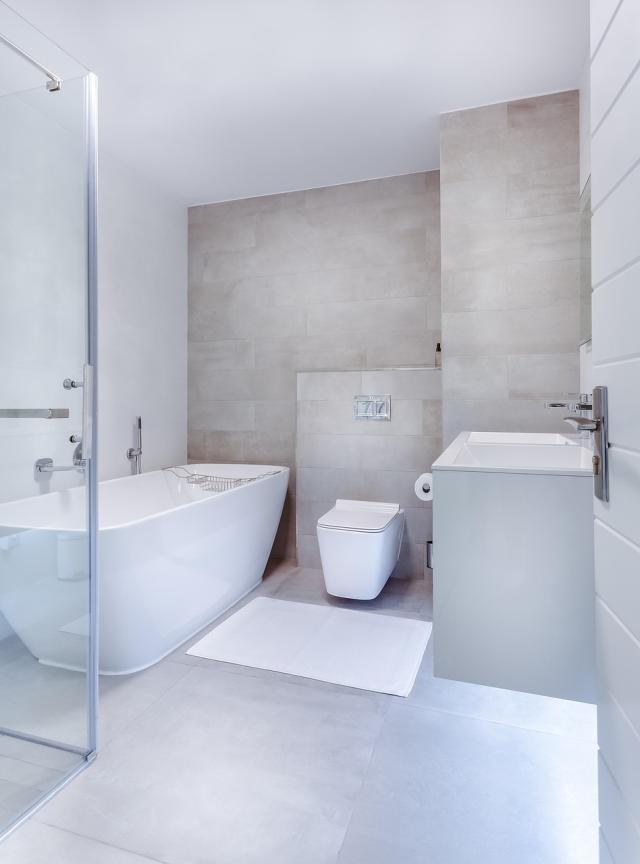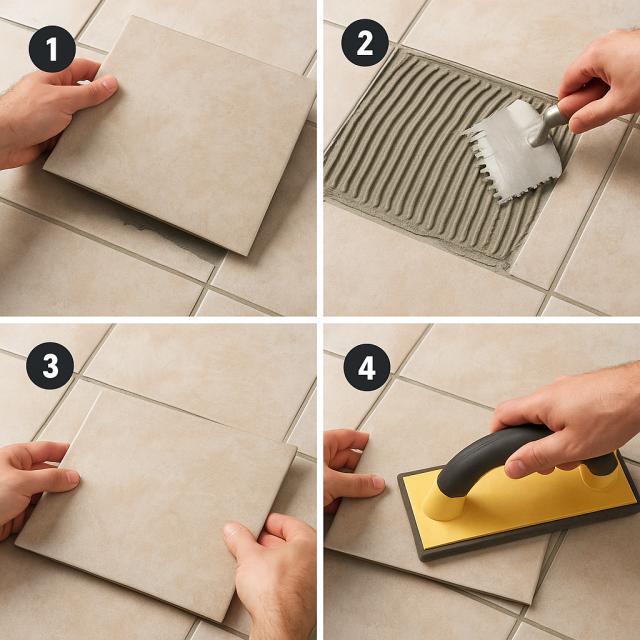
How to Install Tile on Drywall in a Bathroom: A Step-by-S...
Tiling is a favorite wall finish for bathrooms and kitchens across the U.S.—not just for its wate...

Renovating or remodeling your home often involves the use of primer. While necessary for sealing surfaces, primer can accidentally drip or splatter onto tile flooring, leaving behind tough, stubborn stains. Fortunately, there are several effective and safe ways to remove primer from tile floors without damaging the surface.
This guide is tailored for U.S. homeowners and includes user-friendly cleaning methods, recommended products, and helpful advice on tile maintenance.
Primer is designed to penetrate deeply and bond strongly with surfaces, making it an essential component in painting and construction. However, once it lands on ceramic or porcelain tile and dries, removing it can be challenging.
Tile floors in bathrooms, kitchens, and entryways typically have a smooth, durable surface. Yet, dried primer forms a tough film that resists water and most basic cleaning agents. The faster you address it, the better.
Even outside of primer mishaps, homeowners may notice other types of marks on tile, including:
Streaks from old rags or mops: Dirty cloths often leave muddy trails.
Residue from cleaning products: Glossy tiles need non-streaking cleaners and thorough drying.
Hard water stains: High mineral content in water can leave behind white marks.
Dark marks from mold or construction: Especially on light tiles.
Grease or food stains: A common issue in kitchens.
Residual grout or dust post-renovation: If not cleaned properly, this can dull your floor's shine.
Several solutions can help eliminate primer residue, depending on how long it’s been sitting and the tile type.
U.S. stores like Home Depot, Lowe’s, and Amazon carry a variety of tile-safe cleaning agents. Some highly recommended options include:
Cillit Bang or CLR: Great for general grime and primer stains.
Mr. Clean (Magic Eraser or solution): Especially effective on porcelain and glazed ceramic.
Amway Home Surface Cleaners: A trusted choice with gentle yet powerful effects.
ZEP Tile Cleaner: Excellent for tougher jobs like dried-on primer or grout haze.
Avoid powder cleaners—they often scratch glossy tile surfaces.
If you prefer DIY or natural options, try:
Vinegar solution (1:1 with warm water): Works well for newer stains on glazed tiles.
Ammonia and water: Use in a ventilated area; wear gloves and never mix with bleach.
Baking soda paste: Apply and gently scrub with a soft sponge.
Kerosene or mild detergent: For greasy primer marks or sticky patches.
Always dry the tile thoroughly after cleaning to prevent mineral deposits or streaks.
If the primer has hardened completely, a mechanical method might be your only option.
Use a tile scraper or razor blade with a handle (available at hardware stores).
Soften the stain first by soaking a cloth in warm water or soapy solution and covering the spot for 5–6 hours.
Gently scrape without applying strong pressure to avoid scratches.
Use a microfiber cloth with a chalk or baking soda mix to clean residue.
Caution: Avoid scraping on glossy or colored tiles. This method is best for matte or glazed surfaces.
For primer that's deeply bonded with the tile, try acid-based cleaners (carefully):
Vinegar essence or diluted muriatic acid (follow instructions closely).
Lemon juice or citric acid: Safe, non-toxic, and surprisingly effective.
Apply with a sponge and rinse thoroughly after 10–15 minutes. Then, neutralize with a baking soda solution to protect the tile’s surface.
Safety Tip: Always wear gloves and a mask when handling any acidic substance, and ensure good ventilation.
Some types of primer are resistant to water and acids. That’s when organic solvents come in handy:
Acetone (nail polish remover) – safe for most tiles if used sparingly.
Mineral spirits – strong but can irritate skin or lungs.
Turpentine or toluene – industrial strength, use only with gloves and in well-aired spaces.
Ethyl acetate – a less-toxic option with decent effectiveness.
How to Use:
Apply a small amount to a cotton ball or lint-free cloth.
Dab the stain, let sit for 5–10 minutes.
Wipe off with a clean rag and rinse the surface with soapy water.
If nothing else works, you may want to try a heavy-duty cleaner made specifically for post-construction cleanup:
Mr. Muscle (USA version) – works on ceramic tiles, safe for indoor use.
Corvett Cleaner – penetrates rough tile and removes deep dirt.
Atlas Zsop – a highly concentrated cleaner with acid content for stubborn stains.
Hodrupa – an alkaline-based solution great for degreasing and stain lifting.
Powerflex (phosphoric acid-based) – ideal for hardened primer splashes.
Kiilto Clean – fast-acting with minimal foaming, doesn't require extra neutralization.
Check the label for compatibility with your specific tile type before applying.
For textured or non-glossy tile surfaces, a melamine sponge (magic sponge) is an excellent choice. Just wet it with cold water—no need for soap—and gently rub away the stain.
Pro Tips:
Always use gloves.
Don’t wring or bend the sponge too much.
Avoid mixing with bleach or harsh chemicals.
Some cleaning brands offer aerosol sprays made for removing hardened materials like foam and primer. These are ideal for spot-cleaning and can be sprayed directly onto the affected area.
Wipe with a microfiber cloth or rinse with water after the product sits for 5–10 minutes. These products are generally safe for most tile types and leave no visible residue.
Avoiding the issue altogether is the best solution. Here are easy ways to protect your tile floors during renovations:
Cover the entire floor with painter’s plastic, newspapers, or drop cloths.
Tape around the baseboards and along the grout lines with painter’s tape.
Place primer containers on top of thick plastic sheeting.
Immediately clean any splashes before they dry.
Once the job is done, roll up all coverings carefully and dispose of them. Tightly seal any remaining primer.
Even if your tiles are spotless now, regular care keeps them looking fresh:
Sweep or vacuum regularly to remove dust, especially sand or grit that can scratch.
Use warm water and a mild cleaner for weekly mopping.
Apply a ceramic tile wax once a year. It fills micro-cracks and creates a protective layer that resists dirt and primer.
Tiles may seem indestructible, but a little preventive care goes a long way in preserving their look and finish.

How to Install Tile on Drywall in a Bathroom: A Step-by-S...
Tiling is a favorite wall finish for bathrooms and kitchens across the U.S.—not just for its wate...

Why Tiles Fall Off: Common Causes of Tile Detachment Ceramic tiles are a favorite for bathrooms,...

Thanks for joining our homeowners’ community.
Stay tuned!
Choose the category
Choose the category